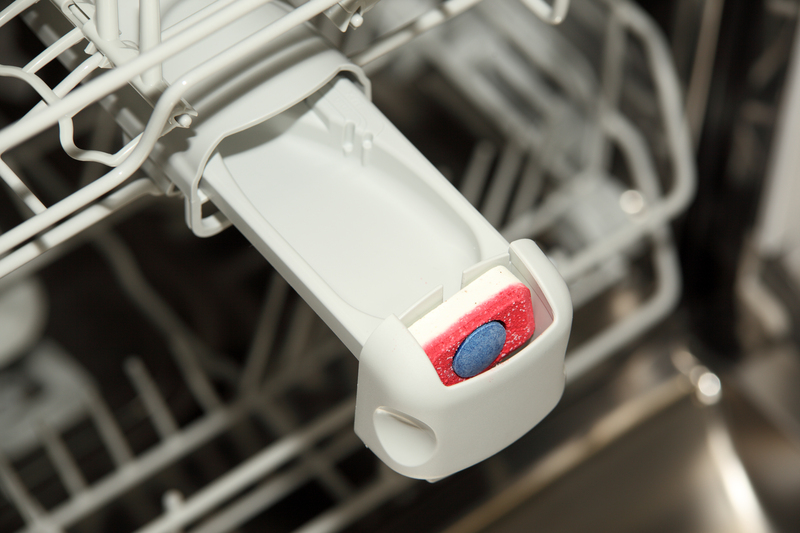How to Safeguard Your Bathroom Against Mold
Posted on 12/06/2025
How to Safeguard Your Bathroom Against Mold
Mold is more than just an annoying cosmetic issue in the bathroom--it can harm your health and compromise your home's structural integrity. Because bathrooms are typically warm and humid, they create an ideal breeding ground for mold spores. Learning how to prevent bathroom mold not only makes your living spaces cleaner but also protects your investment and wellbeing. In this comprehensive guide, we'll show you effective and actionable steps to stop mold in its tracks and maintain a fresh, hygienic bathroom environment.
Understanding Mold: Why Does It Grow in Bathrooms?
Before diving into bathroom mold prevention methods, it's crucial to understand why mold thrives in bathrooms. Mold spores are present everywhere, but they require moisture to grow. Bathrooms provide the perfect setting due to:
- High humidity from showers and baths
- Poor ventilation or inadequate air circulation
- Leaking pipes and plumbing fixtures
- Condensation on walls, ceilings, and mirrors
- Neglected cleaning routines, allowing soap scum and organic matter to accumulate
Mold in bathrooms is not just unsightly--it can cause allergies, asthma attacks, and worsen respiratory problems. Some mold types, like black mold (Stachybotrys chartarum), can be particularly hazardous.

1. Enhance Ventilation for a Mold-Free Bathroom
Install an Effective Bathroom Ventilation Fan
One of the best ways to prevent bathroom mold growth is by managing humidity. A high-quality exhaust fan removes moist air quickly, reducing the chance for mold spores to settle and multiply.
- Choose a fan powerful enough for your bathroom's size - look for the CFM (cubic feet per minute) rating. For example, a standard 8'x5' bathroom needs at least 50 CFM.
- Run the fan during and for at least 20 minutes after every shower or bath.
- Periodically clean dust and debris from the fan grille for optimal performance.
Open Windows and Doors When Possible
If your bathroom has windows, open them regularly to let fresh air in and speed up the evaporation of moisture. Even cracking the door after showers can make a big difference.
Use Moisture-Absorbing Accessories
Add silica gel packs, moisture absorbers, or a small dehumidifier to keep humidity levels below 50%. These affordable solutions are particularly useful in naturally damp or windowless bathrooms.
2. Address Water Leaks and Plumbing Issues Promptly
Leaky plumbing is one of the most common sources of persistent bathroom mold. Whether it's a dripping faucet, a running toilet, or a cracked tile letting water seep beneath, every drop counts. Immediate action will prevent mold from flourishing in hidden corners.
- Inspect under sinks, around toilets, and the base of tubs and showers regularly for signs of moisture.
- Replace worn caulking and cracked tiles as soon as you notice them.
- Consider waterproofing vulnerable areas with specialized sealants and waterproof membranes.
**Tip:** Check the bathroom ceiling below another bathroom or laundry room upstairs--staining, peeling paint, or bubbling can point to a slow leak.
3. Maintain Consistent Cleaning Routines
A thorough and regular cleaning regimen is vital for bathroom mold control. Soap scum, body oils, and organic debris all serve as food for mold colonies. Here's how to keep those surfaces fresh:
Use Mold-Fighting Cleaning Agents
- Disinfect with solutions containing bleach, vinegar, or hydrogen peroxide--these kill most common mold species.
- Avoid mixing cleaning agents (especially bleach and ammonia), as harmful fumes can result.
- Scrub grout, tiles, and corners with a stiff-bristle brush or old toothbrush weekly.
Wipe Down Wet Surfaces Daily
Don't allow water to linger. After showers or baths, use a squeegee or towel to dry tiles, glass, and mirrors. Also, shake out bath mats and remove damp towels promptly.
Pay Special Attention to Shower Curtains and Liners
- Machine wash fabric curtains regularly with hot water and a little vinegar.
- Replace or disinfect vinyl liners monthly to prevent mildew buildup.
4. Control Humidity: The Key to Preventing Mold in Bathrooms
Humidity levels above 60% breed mold quickly. To effectively safeguard your bathroom from mold, use these moisture management strategies:
- Install a humidity monitor: These affordable digital devices help you monitor and keep levels in the healthy range (30-50%).
- Keep showers short and use cooler water: Less steam means less airborne moisture to condense on surfaces.
- Consider a portable dehumidifier if your bathroom is particularly prone to dampness.
5. Upgrade Bathroom Materials to Discourage Mold Growth
The surfaces and materials in your bathroom can play a major role in bathroom mold resistance. Whenever you renovate or update fixtures, look for products designed to resist mold:
- Mold-resistant paint: These specialty paints contain antimicrobial agents that actively neutralize spores.
- Epoxy grout: Unlike porous cement-based grout, epoxy resists water and block mold penetration.
- Non-porous tiles: Porcelain or glazed ceramic tiles absorb less water than natural stone.
- Solid surface shower enclosures: These minimize seams and joints, giving mold fewer places to hide.
Seal All Gaps and Joints
Check and replenish silicone or latex caulking around tubs, sinks, and showers at least twice a year. This simple step prevents continued moisture ingress behind walls and under flooring, reducing the risk of hidden mold.
6. Eliminate Clutter and Improve Air Circulation
A cluttered bathroom provides dark, poorly ventilated spots where mold in the bathroom can take root. Create a streamlined, easy-to-clean space by:
- Storing toiletries and cleaning products in closed cabinets.
- Avoiding excessive "soft items" like rugs, towels, and fabric blinds--which absorb moisture.
- Leaving space between the wall and storage baskets or bins to allow airflow.
7. Special Tips for Preventing Mold in Small or Windowless Bathrooms
Bathrooms without windows require extra vigilance for mold prevention. These tips will help you stay ahead:
- Upgrade to a high-powered, properly vented exhaust fan--never vent into the attic; always vent outside.
- Use an automatic fan timer switch so nobody forgets to run the fan.
- Install a small, low-power dehumidifier designed for tight spaces.
- Paint walls and ceilings with high-gloss, mold-inhibiting paint for easier wipe-downs and less spore adherence.
8. Recognize Early Signs of Bathroom Mold and Act Fast
Detecting mold in the earliest stages is crucial for easy and safe removal. Be alert for:
- Black, green, pink, or orange spots on grout, tiles, ceilings, or corners.
- Musty or earthy odors, especially after bathing.
- Peeling or bubbling paint and discolored caulk.
- Condensation or water beading in strange places.
Any visible mold, no matter how minor, should be tackled immediately with the cleaning tips above. For persistent or widespread outbreaks, contact a professional mold remediation service.
9. Invest in Maintenance and Periodic Deep Cleaning
A mold-proof bathroom is all about consistency. Scheduling regular deep cleans and maintenance will keep any hidden problems from spiraling out of control.
- Steam-clean grout and tile quarterly for an intensive refresh.
- Empty out under-sink and behind-toilet storage areas to look for hidden dampness or mildew.
- Inspect and clean exhaust fans at least every six months.
- Refresh caulking and grout annually or as needed.
10. How to Remove Mold from Your Bathroom Safely
If you discover small patches of mold despite your bathroom mold protection efforts, it's important to remove it properly:
- Wear gloves, a mask, and goggles to avoid contact with spores.
- Ventilate the room during cleaning.
- Mix 1 cup of bleach with 1 gallon of water, or use full-strength white vinegar for natural cleaning.
- Scrub moldy spots, rinse well, and dry the area thoroughly.
- Do not paint or caulk over mold--always remove it fully before sealing surfaces.
Warning: If you discover large patches (over 10 square feet), suspect black mold, or experience ongoing mold despite cleaning, call for professional help. Mold remediation experts have the tools and knowledge to address extensive infestations safely.

Frequently Asked Questions About Bathroom Mold Prevention
What's the best cleaner for bathroom mold?
Bleach, vinegar, and hydrogen peroxide are all effective at killing bathroom mold. For natural mold prevention in the bathroom, look for tea tree oil or baking soda solutions.
How often should I clean to prevent mold in bathrooms?
Aim for a surface wipe-down at least twice a week, with deeper cleaning (including tile grout) weekly. Squeegee or dry surfaces after every shower for best results.
Can bathroom mold make me sick?
Yes, mold exposure can cause allergic reactions, worsen asthma, and lead to respiratory illnesses. Certain types, like black mold, are even more dangerous for vulnerable people (the elderly, children, or those with immune disorders).
Can I completely get rid of mold spores from my bathroom?
While you cannot eliminate all mold spores (they're present in all indoor and outdoor air), controlling moisture is the best way to prevent them from growing and spreading in your bathroom.
Conclusion: Take Action Today for a Healthier, Mold-Free Bathroom
Safeguarding your bathroom against mold is a process that requires a combination of vigilance, routine cleaning, and smart design choices. Remember, the drier and cleaner your bathroom stays, the less chance mold has to take hold. Invest in proper ventilation, fix leaks immediately, opt for mold-resistant materials, and establish habits that keep moisture in check. With these proven strategies, you'll enjoy a safer, fresher, and healthier bathroom for years to come.
Ready to make your bathroom mold-free? Start today--small changes have lasting results!




